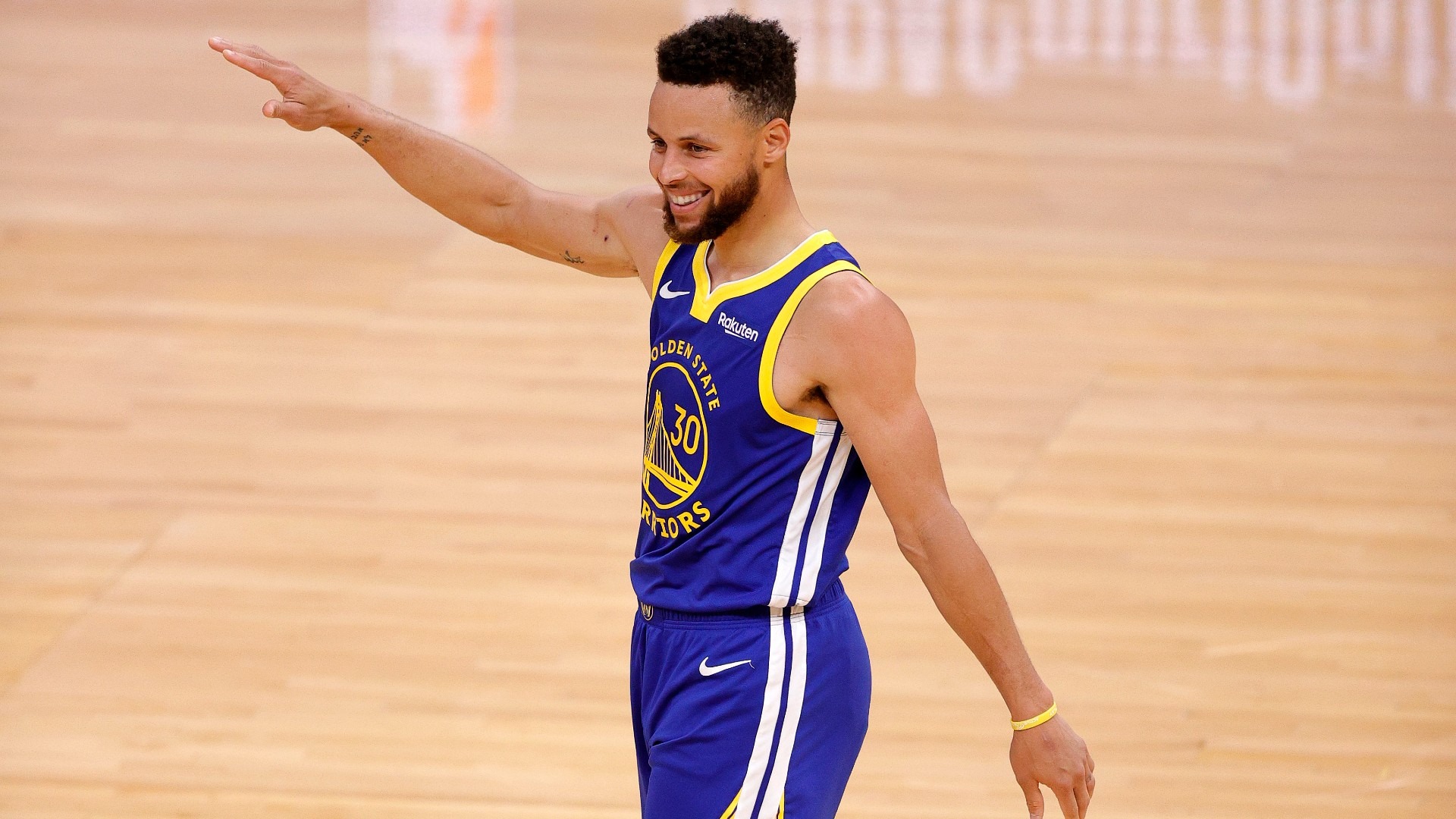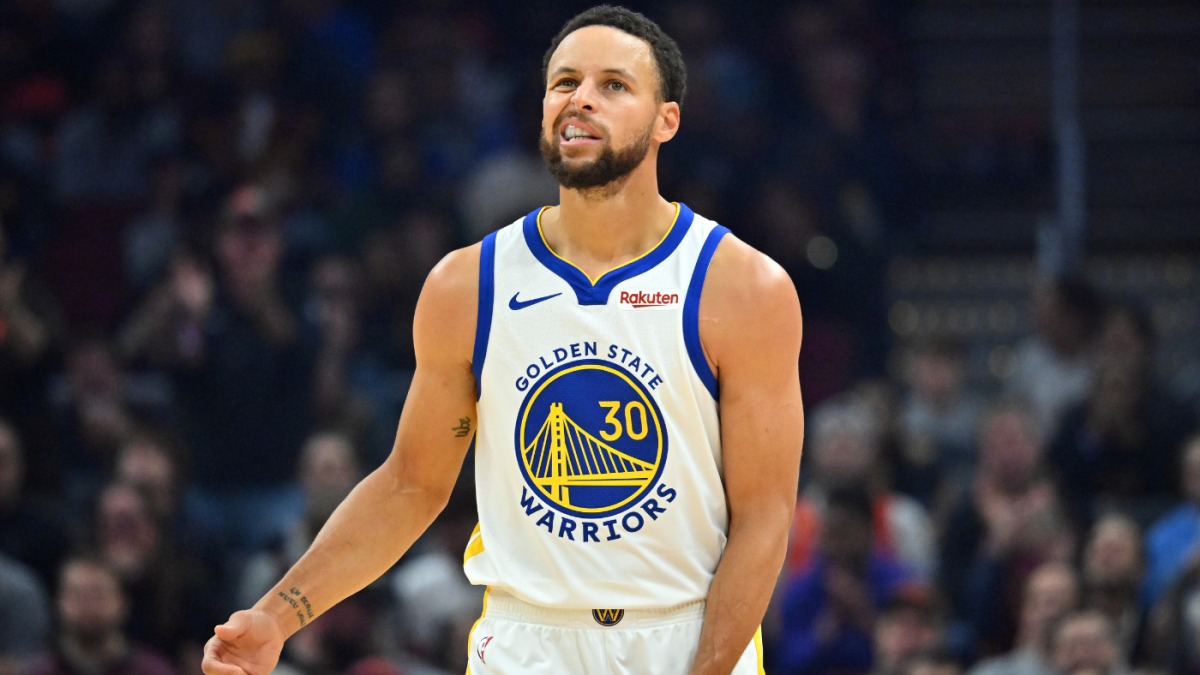Stephen Curry is off the a blistering start this season, averaging 30 points on comical efficiencies as the only player in history to open an NBA season with nine straight games with at least four made 3-pointers. In seven of those nine games he’s made at least six 3s. He’s scored the most total points in the league despite playing just 32 minutes per game — three fewer than last season and in line with what would be Curry’s lowest career MPG load.

This is by design. Steve Kerr has acknowledged something of a self-imposed mandate to keep Curry’s minutes relatively low. That’s smart for a couple reasons. One, Curry will turn 36 in March. He might be playing his best basketball ever, but he’s no spring chicken.
Two, this Warriors team could end up being more reliant on him to play huge minutes in the playoffs; it would behoove them to have him as fresh as possible for that task.
Perhaps the idea of this particular Warriors team being even more heavily dependent on Curry than usual sounds contradictory to the early on-off splits, if you’re one of the nerds who keeps track of these things. It’s true, Golden State, through nine games, is seven points better per 100 possessions with Curry off the floor, per Cleaning the Glass.

Both those net numbers are double-take worthy if you’ve ever kept track of the Warriors’ numbers with and without Curry. Over the years, they haven’t just outscored opponents by a reasonable number with Curry on the floor; they have killed people. That plus-three is surprisingly modest.
It’s also a bit deceiving in that it’s largely tied to Andrew Wiggins, who has been pretty bad to start the year, and his struggles skew these splits more radically in a small sample.
With Curry on and Wiggins off, Golden State is bulldozing opponents by 31.3 points per 100 possessions. Add Wiggins to the equation, and they’re a negative 8.2.

That means that over the course of 100 possessions, which is roughly a full NBA game, Wiggins, on his own, is a 40-point swing in the wrong direction when he plays alongside Curry.
That likely won’t continue. If it does, the Warriors are probably cooked, because they are not in a position to go without Wiggins, if only for his ability to create his own shots, and remain a true contender, if you believe they are currently one to begin with.
And that’s the bigger point here. The Warriors, for all their depth, are actually short on offensive juice. Yes, Chris Paul has been a godsend in that he, as a smallish part of a so-far stellar defense and with a pristine assist-to-turnover ratio, is elevating non-Curry lineups to heights never before seen, but he is also scoring eight points a game on 36% shooting.

Paul’s 89.8 points per 100 shot attempts registers in the ninth percentile of all point guards, per CTG. At this point, the 3-point line looks completely out his range; he’s made just five of his 33 attempts. He has gotten his patented midrange shot going in a few spurts, but nothing on the regular.
Klay Thompson isn’t the player he used to be. He’s still good, and on a given night perhaps he can still be great, but overall he’s at 35% from 3 and feels more like Steph support than a true partner in crime these days.
We know Draymond Green can’t score. Same for Gary Payton II. Jonathan Kuminga has looked pretty good, but he’s nowhere near ready to be a top-line threat on a contender. Ditto for Moses Moody.
The fact is, not one Warriors player other than Curry has scored more than 20 points in a game this season, and the only player to even land on 20 is Dario Saric, who did it once, and very well might not do it again the rest of the season.
At present, the 13.6-point gap between Curry’s 30.9 PPG and the Warriors’ second-leading scorer (Klay Thompson, 16.6 PPG) is the biggest scoring discrepancy on any team with better than a .500 record.
Say what you want about Jordan Poole, but he was a real creator alongside Curry, and his scoring juice was a big part of Golden State’s surprise title run in 2022. That’s gone now. The team is more solid now with Paul in Poole’s place, on both ends, but it’s also more strapped for buckets.
When Curry can’t get going, as he struggled to do down the stretch of Golden State’s loss to Denver on Wednesday, there really isn’t anywhere else for Kerr to turn. That makes for a delicate balance: Keeping Curry’s minutes down in the regular season knowing he’s going to have to go nuclear for long stretches come playoff time, but also ride him enough to make it to the playoffs in good shape to begin with.
There are a lot of positive things happening with the Warriors right now. Their 6-3 record entering play on Friday looks good, especially with five of those wins having come on the road. But two of those victories could’ve easily gone the other way. Thompson turned a one-point loss into a win against the Kings with a game-winning jumper. Curry was credited with a game-winner in Oklahoma City that could’ve been wiped away on a basket-interference call.
Flip those two outcomes, and how good do the Warriors look, or feel, at 4-5 preparing to play Cleveland which already beat them, and before two-game sets with the Timberwolves and Thunder, two very good teams, over a five-game home stand? Suddenly a 6-8 start, or even 7-7, is in play.
The margins here are thin. Kerr who can no longer rely on his roster simply being way more talented than anyone else for the details to really matter, is trying to win those margins, every night, without overtaxing Curry, the one true advantage he has to work with.
So far Curry has been so explosive in the fewer minutes he’s playing that it hasn’t been necessary to push him, especially with the bench punching above its collective weight. But if that doesn’t continue , which it seems likely that it won’t, then the balancing act really begins. Because in the Western Conference, things can get very tight very quickly.